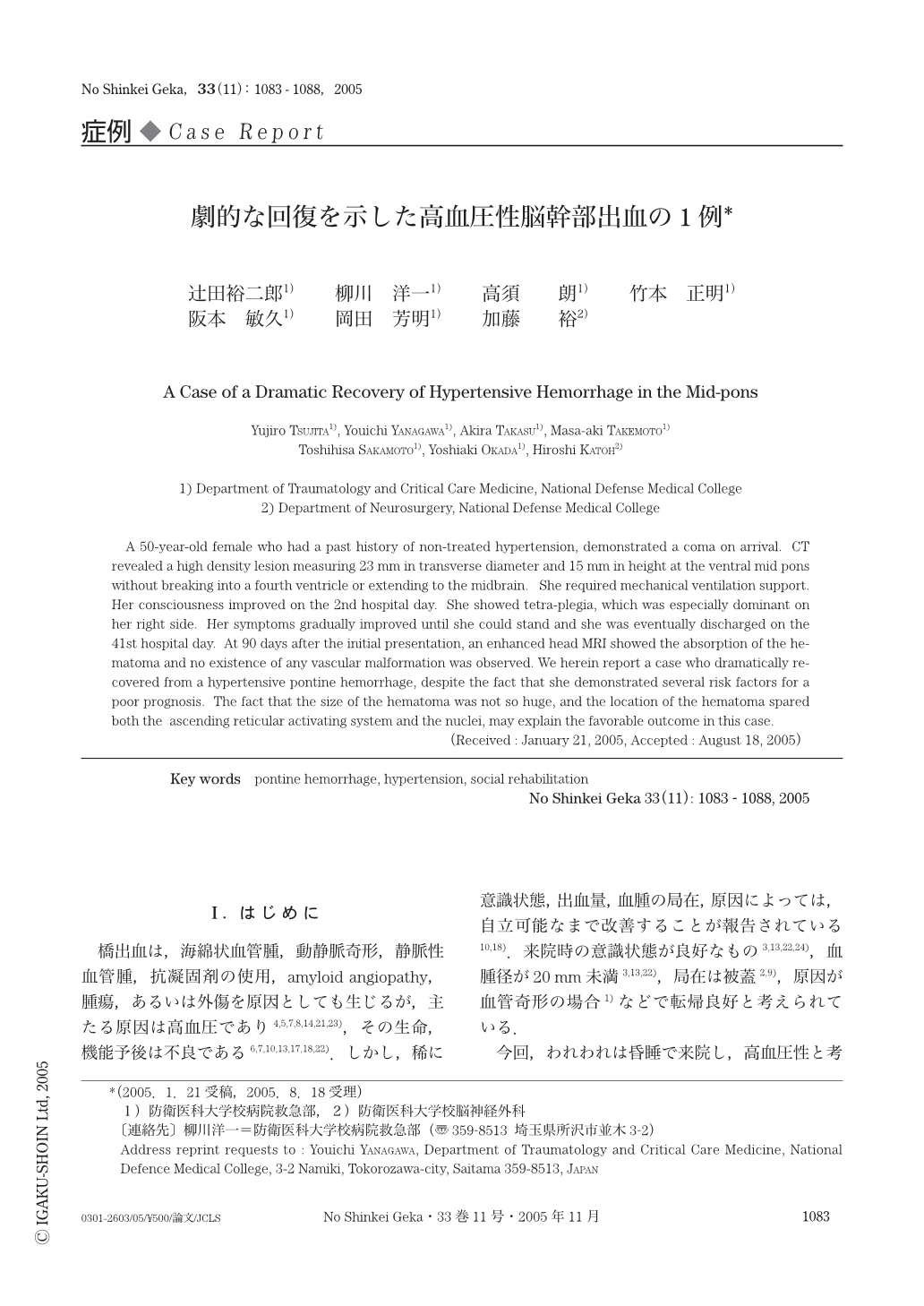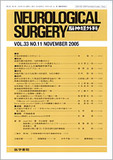Japanese
English
- 有料閲覧
- Abstract 文献概要
- 1ページ目 Look Inside
- 参考文献 Reference
Ⅰ.はじめに
橋出血は,海綿状血管腫,動静脈奇形,静脈性血管腫,抗凝固剤の使用,amyloid angiopathy,腫瘍,あるいは外傷を原因としても生じるが,主たる原因は高血圧であり4,5,7,8,14,21,23),その生命,機能予後は不良である6,7,10,13,17,18,22).しかし,稀に意識状態,出血量,血腫の局在,原因によっては,自立可能なまで改善することが報告されている10,18).来院時の意識状態が良好なもの3,13,22,24),血腫径が20mm未満3,13,22),局在は被蓋2,9),原因が血管奇形の場合1)などで転帰良好と考えられている.
今回,われわれは昏睡で来院し,高血圧性と考えられる径23mmの中心性橋出血の症例が意識を回復し,起立可能となった症例を経験したのでここに報告する.
A 50-year-old female who had a past history of non-treated hypertension,demonstrated a coma on arrival. CT revealed a high density lesion measuring 23 mm in transverse diameter and 15 mm in height at the ventral mid pons without breaking into a fourth ventricle or extending to the midbrain. She required mechanical ventilation support. Her consciousness improved on the 2nd hospital day. She showed tetra-plegia,which was especially dominant on her right side. Her symptoms gradually improved until she could stand and she was eventually discharged on the 41st hospital day. At 90 days after the initial presentation,an enhanced head MRI showed the absorption of the hematoma and no existence of any vascular malformation was observed. We herein report a case who dramatically recovered from a hypertensive pontine hemorrhage,despite the fact that she demonstrated several risk factors for a poor prognosis. The fact that the size of the hematoma was not so huge,and the location of the hematoma spared both the ascending reticular activating system and the nuclei,may explain the favorable outcome in this case.

Copyright © 2005, Igaku-Shoin Ltd. All rights reserved.


